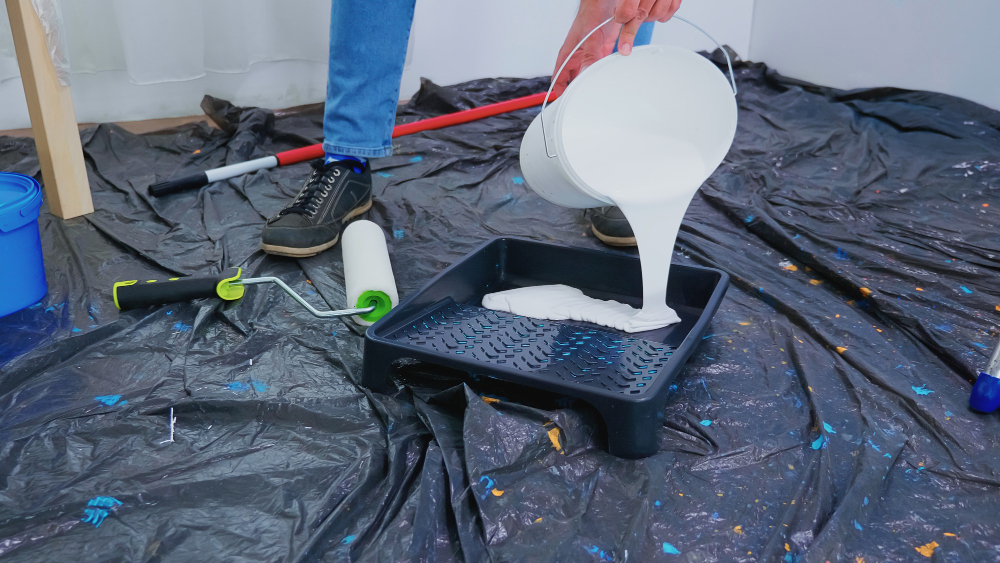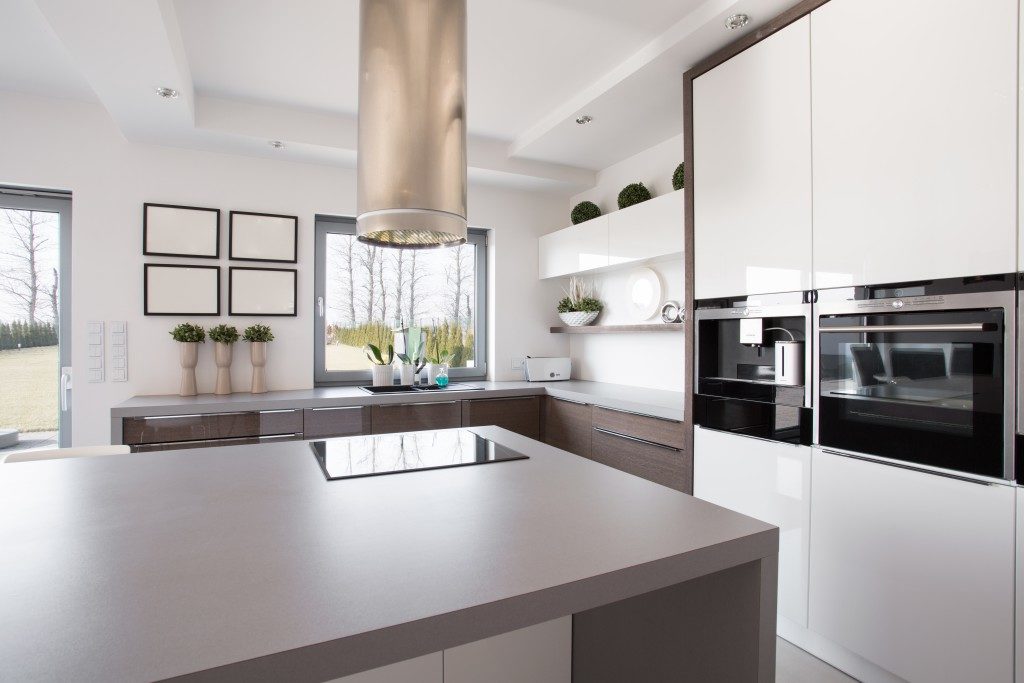The garage has multiple functions and is considered an extension of a home. It can be used for storage, as a workshop, or even as a hangout space. It also ensures the most used garage tools are the ones that look their best. Painting the garage is one of the easiest ways to make it more inviting and attractive.
While many garages are unfinished, it doesn’t have to remain that way. Adding some paint to the walls and floors makes the space look better, easier to clean, and brighter. Additionally, this allows for customization to the space to make it your own.
When painting a garage, there are several factors to consider. The temperature and humidity levels of the space should be factored in, as the paint will only last if these are at an ideal level. Additionally, the type of flooring will determine what kind of paint is used. Below are some ideas for do-it-yourself (DIY) garage paint projects.
Preparing Your Garage for Painting
Before embarking on a DIY garage paint project, preparing the space thoroughly to achieve great results is crucial. Proper preparation ensures that the new paint adheres well to the surfaces, lasts longer, and gives a fantastic finish. Here are the things you need to do to prepare your garage for painting:
Clean the Garage Walls
Cleaning the garage walls is one of the most crucial steps in preparing the space for a DIY paint project. Proper cleaning and preparation are vital when preparing a surface for painting to ensure the paint adheres well and lasts longer. Any debris, dirt, or grease on the walls will adversely affect the bond between the paint and the surface, causing the paint to peel, flake, or blister. Therefore, it is necessary to ensure that the walls of your garage are clean and free of any dirt or grease before painting.
Remove any Previous Paint or Coating
When preparing a garage for a DIY paint project, it is essential to remove any previous paint or coating that may be present on the walls or floor. Failure to remove the old paint or coating could lead to several issues, such as poor adhesion of the new paint, peeling, or flaking, all of which undermine the longevity and look of the new finish. Additionally, if the previous paint or coating is oil-based and the new one is water-based, it may result in undesirable chemical reactions that affect the finish.
Repair any Damage on the Walls
Repairing any damage on garage walls is essential to ensure that the new paint will adhere properly and last longer. Neglecting this step can lead to unsightly results and may ultimately lead to the walls of the garage deteriorating further.
Sand the Walls
Sanding the walls is critical in preparing a garage for a DIY paint project. This step smooths out the wall’s surface, ensuring the new paint will adhere evenly and provide a polished finish. Sanding the walls also helps to remove any rough spots, drywall mud, or residue that can affect the consistency of the new coat of paint.
Apply Primer
After thoroughly cleaning and preparing your garage walls for painting, the next crucial step is to apply primer. Primer is a preparatory coating applied to surfaces before the paint to ensure better adhesion, longer-lasting results, and a more polished finish.
Top 15 DIY Garage Paint Ideas
Here are the top 15 DIY garage paint ideas to choose from:
Epoxy Floor Coating
Epoxy floor coating is an excellent option for sprucing up their garage space. This coating is durable and easy to clean, making it an ideal choice for garages. Additionally, epoxy floor coating comes in a variety of colors and finishes, giving you plenty of options to choose from.
Chalkboard Wall
Chalkboard walls are a great way to make your garage look more interesting and fun. It also allows you to easily mark off projects or write reminders on the wall, making it an excellent choice for busy individuals.
Racing Stripes
Racing stripes on garage walls add style and personality to the space. This look will stand out, giving your garage an eye-catching appeal.
Faux Brick Walls
Painting faux brick walls in the garage can give it a unique, rustic look. This is an easy and cost-effective way to add texture and character to the garage walls without installing real bricks. You also have to know how to adjust the garage door to suit the interior pattern of your paint.
Metallic Finishes
Using metallic finishes on garage walls is an excellent way to add a modern touch to the space. Metallic finishes also have a reflective quality, allowing them to capture and reflect light in the area easily.
Mural Paintings
Mural paintings can bring a unique, personal touch to the garage space. This look can be customized with any desired image or pattern, allowing you to create something unique.
Stenciled Patterns
Stenciled patterns on the garage walls can give it a unique, custom look. This is an easy way to add character and personality to the space without investing in expensive materials or labor.
Polka Dots
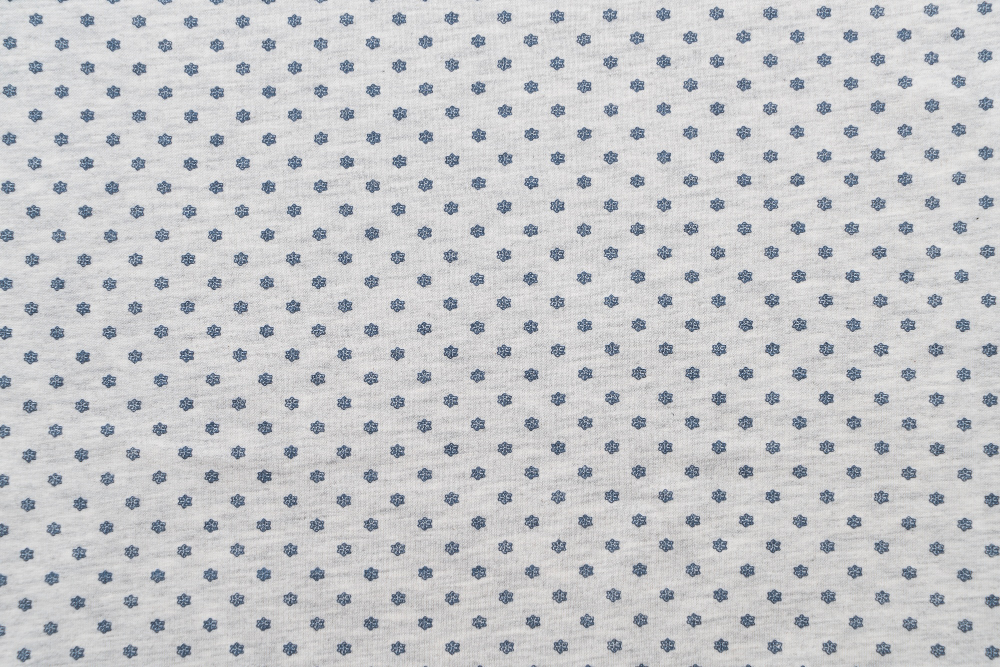
Adding polka dots to your garage walls can help make it look more fun and inviting. This unique design will enhance the garage and allow it to draw attention.
Checkerboard Pattern
Using a checkerboard pattern on the walls of your garage can give it a unique, classic look. This is an easy way to add color and texture to the space without investing in more expensive materials.
Bright Accent Walls
Bright accent walls in the garage can help draw attention and make the space more inviting. This is an excellent way to make a dull garage look lively and cheerful.
Ombre Effect
An ombre wall is a great way to add color, texture, and depth to the garage space. This look is sure to be the envy of all your friends and family, adding a unique, modern touch to the area.
Camouflage Walls
Camouflage walls are a great way to add personality and style to the garage. The design makes it unique and exciting, and it can also be customized with any desired pattern or image.
Graffiti Art
Adding graffiti art in the garage is an excellent way to make the space look more interesting and unique. This look can be customized with any desired image or pattern, allowing you to create something truly special and one-of-a-kind.
Glow-in-the-Dark Accents
Using glow-in-the-dark accents in the garage is an excellent way to make the space look more interesting and fun. This look will draw attention and help add a unique touch to the area.
Rustic Look
A rustic look for the garage can help to give it a vintage feel. The look will attract attention and make the space more inviting and welcoming.
These are the top 15 DIY garage paint ideas to choose from. These ideas allow you to transform your garage into a more inviting and attractive space. Make sure to take the necessary steps in preparing the surface for painting before embarking on any of these projects. Doing so will ensure excellent results and a polished finish that lasts longer.
Materials and Tools Needed
You will need various materials and tools to complete a DIY garage paint project. These materials and tools include:
Painting Tools
Here are the essential painting tools for a DIY garage paint project.
Paint Rollers – Using a paint roller is the best option for covering large areas. Wool rollers work well with oil-based paints, and synthetic rollers, like nylon, work well with latex paints. For a smoother finish, use a roller with a shorter nap.
Brushes – Rollers are suitable for painting large wall spaces, but paint brushes work best for smaller and edged areas. For oil-based paints, natural-bristle brushes are recommended, while polyester brushes work well with latex paints. To paint straight lines along the trim, select an angled paintbrush. A flat-headed brush is the best choice for filling in large, even areas.
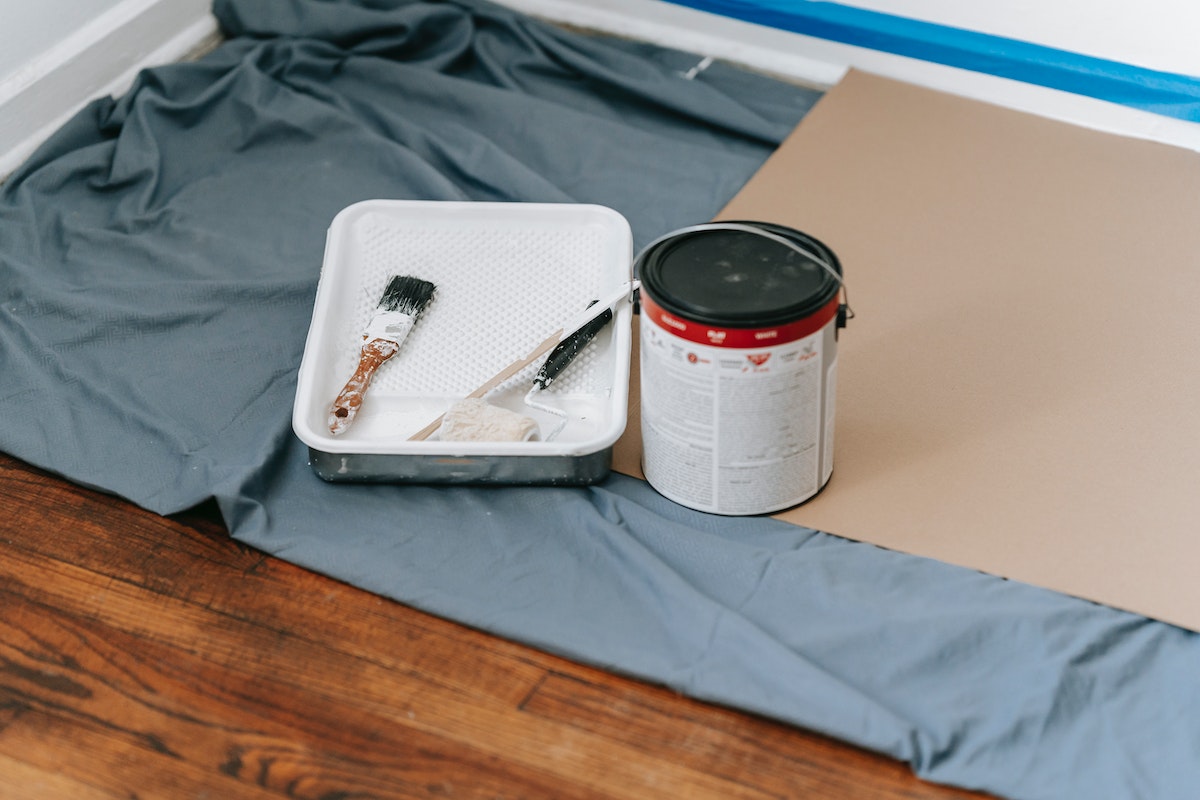
Painting Tray – A paint tray is a must if you use a paint roller. Your best bet is to use a durable paint tray. Using disposable plastic inserts is also ideal for different colors of paint. Dip your roller in the paint well before rolling it on the slanted surface. This will distribute the paint on the roller and remove the excess before you paint the walls.
Drop Cloth – When painting, it’s crucial to use drop cloths to protect floors and furniture. Canvas drop cloths are the priciest option, but they’re durable and effective at absorbing paint spills. On the other hand, plastic drop cloths are reusable and lightweight. However, they may be less effective since paint spilled on them could puddle instead of being absorbed like with canvas drop cloths.
Types of Paint
When it comes to the type of paint, you have several options to use in the garage. Here are some options available for you.
Latex Paint – Indoor paint jobs often use latex paint as a popular and eco-friendly choice. It is faster to dry than oil-based paint, and cleaning it is effortless using soap and water. Yet, it’s not as long-lasting as oil-based paint and is preferable for areas not frequently used, such as walls and ceilings.
Acrylic Paint – Water-based paints are often referred to as latex and acrylic paints, with similar compositions and applications. However, acrylic paint generally contains more acrylic polymers than latex paint. It is advisable to read the label of any paint before purchasing it to avoid confusion.
Alkyd Paint – Oil-based paints are composed primarily of oil, with alkyd oil being a commonly used base. Although water-based paint is more prevalent, oil-based paint has advantages such as increased durability and a smoother finish that hides brush or roller marks. It is frequently suggested for use on surfaces subjected to regular wear and tear, such as furniture, floors, and doors.
Enamel Paint – The term “Enamel” is commonly used to refer to paint known for its durability and ability to withstand wear and tear. While it is typically used for exterior paints, it can also be used indoors. Traditionally, enamel paints were predominantly oil-based; however, some water-based paints are now labeled as enamel. It is crucial to read the paint description carefully to determine the type of paint you are purchasing.
Other Materials Used for Painting the Garage
The other materials you need to paint the garage include:
Putty Knife – A putty knife is used to scrape away old paint, caulk, and adhesive residue from walls. It can also be used for scraping surfaces that do not need to be repainted.
Masking Tape – Masking tape is essential when painting a garage as it helps keep edges neat and clean. It can cover trims, door frames, and other surfaces that need not be painted.
Sandpaper – Sandpaper is used for smoothing out walls before painting them. It is a must-have tool when preparing the surface of the garage for painting, as it helps ensure an even finish.
Painter’s Caulk – Painter’s caulk is used to fill in any gaps or cracks in the walls before painting them. This helps create a smooth surface that will give a professional finish.
Spackling Compound – Spackling compound can be used on larger holes and dents to even out the surface of the garage before painting.
Tips and Tricks for a Successful DIY Garage Painting Project
Planning is one of the best ways to ensure a successful DIY garage painting project. Here are some tips and tricks to help you get started:
Planning and Preparation
Planning and preparation are essential for any successful DIY garage painting project. Without adequate planning, mistakes are likely to be made, leading to unsatisfactory results. A well-thought-out plan provides a clear roadmap for the project, ensuring every aspect is tackled systematically for a high-quality finish.
Layering and Blending Techniques
Layering and blending techniques are essential for creating a smooth, polished finish when painting. Start by priming the wall with an oil-based primer, and then apply multiple layers of paint to create a consistent look. Brushes and rollers blend the colors to avoid stark lines or noticeable brush marks.
Choosing the Right Colors and Patterns
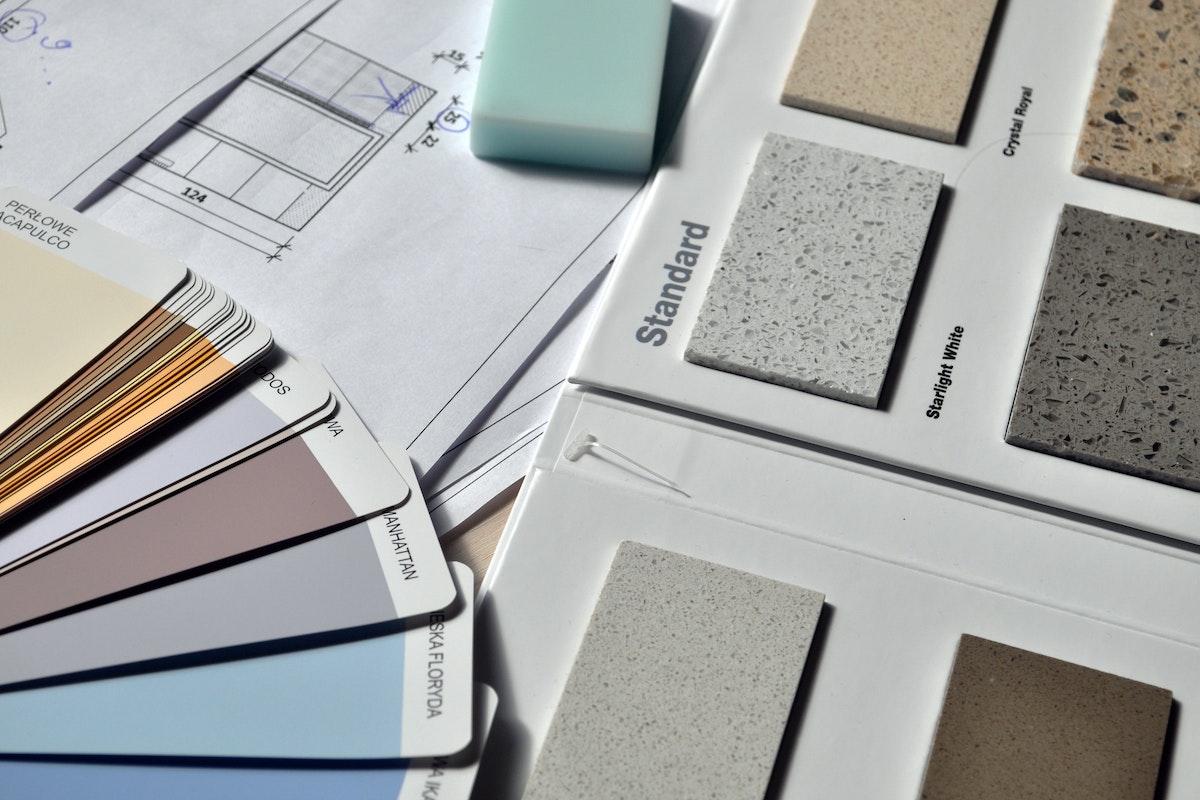
Choosing the right colors and patterns for your garage walls is essential to creating a space that reflects your personality. Consider the existing decor in the area and what color would best complement it before making any decisions. Remember, plenty of options are available when it comes to painting, so don’t be afraid to get creative!
Proper Ventilation and Safety Measures
Proper ventilation and safety measures are essential for any painting project. Make sure to open the windows in the garage and wear a protective face mask when painting. The mask should be fitted tightly to avoid exposure to fumes from paint. Additionally, follow all safety instructions with the materials you’re using.
Cleaning and maintenance tips
Once the painting project is completed, it’s essential to maintain a clean and neat garage space. Cleaning should be done regularly to keep walls fresh and free of dust or dirt. Use a damp cloth for wiping down walls, paying attention to any nooks and crevices where paint may have accumulated. Additionally, if you plan to install a garage heater, follow the manufacturer’s instructions for proper care and maintenance.
Frequently Asked Questions
1) How much does it cost to paint a garage?
On average, the cost of painting a garage costs $0.31 per square foot. For example, a 300-square-foot garage will cost around $794 to paint, while a 1,000-square-foot garage will cost between $69 and $1,053.
2) How long does it take to paint a garage?
The time it takes to paint a garage depends on the space size and how much preparation is required. On average, painting a single-car garage can take anywhere from one to three days.
3) Can I paint the garage floor without primer?
It is not recommended to paint a garage floor without using primer. Primer helps provide a better bond between the concrete and the paint, ensuring an even finish that will last longer.
4) Can I paint over the epoxy coating?
Yes, it is possible to paint over an epoxy coating. However, you should ensure the surface is clean and dirt or debris-free first. A primer is specifically designed for painting over epoxy coatings before applying any paint.
5) What is the best paint for garage walls?
The best paint for garage walls depends on personal preference. Latex and acrylic paints are popular options, as they are easy to apply and clean up with soap and water. However, oil-based paints may be more durable and provide a smoother finish.
Bottom Line
DIY garage paint projects can add character and personality to your space without investing in expensive materials or labor. With the right tools, materials, and techniques, you can transform your boring garage into an inviting area that stands out. You can create a stunning look with minimal effort by following these tips and tricks for successful painting projects. Whether you choose bright accent walls, stenciled patterns, graffiti art, or glow-in-the-dark accents – these DIY ideas will surely bring life back into any dull garage!

